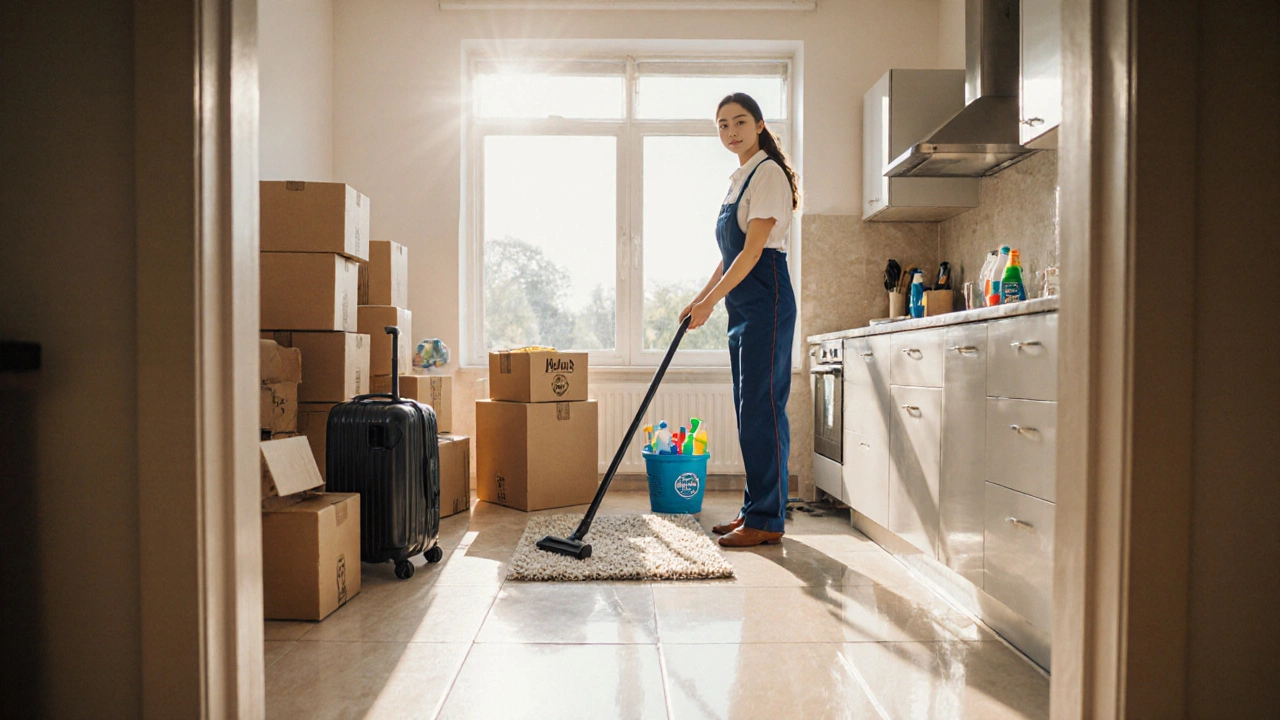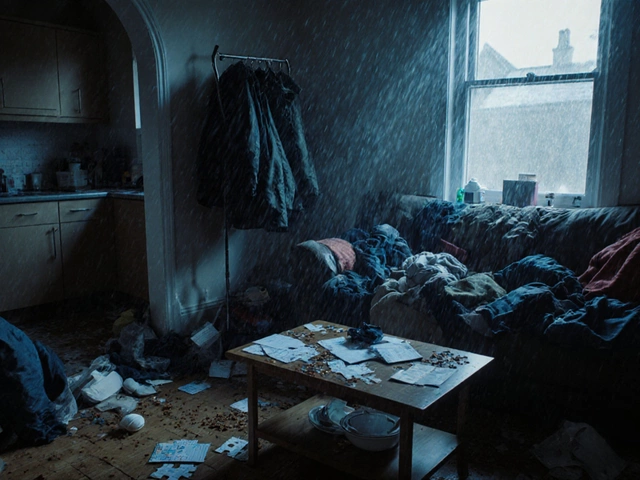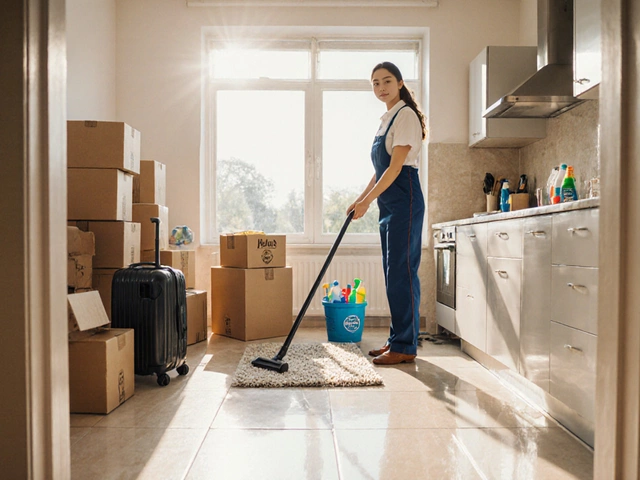End-of-Tenancy Cleaning Tax Calculator
Calculate Your Tax Savings
Determine how much you could save by claiming your end-of-tenancy cleaning costs on your rental income.
Your Potential Tax Savings
Based on your inputs
To qualify for this tax deduction, your cleaning service must:
- Be directly linked to rental property turnover
- Be required to prepare the property for a new tenant
- Be paid by the landlord (or reimbursed by the landlord)
- Be a revenue expense, not a capital improvement
Facing a move‑out deadline and a spotless apartment requirement can feel like a race against time. Most tenants hire a Cleaning lady services is a professional cleaning arrangement that covers everything from carpet shampoo to oven degreasing. The big question that pops up at the end of the day (or the end of the tenancy) is: can you claim that expense on your taxes? The short answer is yes-if you meet the right criteria. Below is a step‑by‑step rundown of when the expense qualifies, how to claim it, and what mistakes to avoid.
When Is a Cleaning Lady Service Tax‑Deductible?
HMRC (the UK tax authority) allows you to deduct "allowable expenses" from your rental income. A cleaning lady’s bill counts as an allowable expense when the cleaning is directly linked to the rental activity, not a personal luxury.
- Revenue expense: The service must be a normal, ongoing cost of letting a property-think of it like an operating cost rather than a one‑off improvement.
- Necessary for tenancy turnover: The cleaning should be required to restore the property to a condition that meets the tenancy agreement or lets you attract a new tenant.
- Paid by the landlord or tenant: If you, as the landlord, pay the bill, you can claim it. If the tenant pays, you can’t claim it unless you reimburse them and keep the receipt.
Separate this from "capital expenditure"-big upgrades like new flooring or a fresh paint job, which must be added to the property's value and claimed over several years as depreciation.
Which Cleaning Services Qualify?
Not every mop‑and‑bucket session qualifies. Below is a quick checklist of services that HMRC typically accepts:
- End‑of‑tenancy deep cleaning (carpets, curtains, kitchen appliances).
- Professional window cleaning if it’s required for marketing the property.
- Upholstery or mattress cleaning when the previous tenant left stains.
- Steam cleaning of floors and walls as part of a hand‑over condition.
Services that are more about personal preference-like scented candles, decorative polishing, or a weekly housekeeping schedule-are considered private and cannot be deducted.
How to Claim the Deduction on Your Self Assessment
Claiming the write‑off is straightforward once you have the paperwork. Follow these steps:
- Log into your HMRC online portal.
- Navigate to the Self Assessment section and open the "Income and expenses" page for the relevant tax year.
- Under "Property income" find the line item "Other allowable expenses" and enter the total amount you paid the cleaning lady.
- Upload a scanned copy of the invoice or receipt. The document must show the date, service description, and amount.
- Save and submit your return before the 31 January deadline.
Once submitted, HMRC may ask for additional proof. Keeping thorough records reduces the chance of a query.
Record‑Keeping Best Practices
Good record keeping is the safety net that keeps your claim solid. Here’s a quick cheat sheet:
- Store original invoices for at least six years from the end of the tax year.
- Maintain a spreadsheet with columns for date, service type, amount, and receipt reference.
- If you reimburse a tenant, keep a copy of the repayment proof and note it as a "reimbursed expense" in your accounts.
- For VAT‑registered landlords, retain the VAT breakdown and ensure the expense aligns with your VAT recovery criteria.
Common Pitfalls & HMRC Rules to Watch
Even seasoned landlords stumble on a few recurring traps. Avoid these to keep your write‑off smooth:
- Mixing personal and rental cleaning: If you use the same service for your own home, split the bill proportionally and only claim the rental portion.
- Claiming after the tenancy ends: The expense must be incurred within the accounting period that covers the tenancy turnover. Late claims can be rejected.
- Missing receipts: A handwritten note is not enough. HMRC expects a formal invoice with your landlord name, property address, and VAT number if applicable.
- Double‑counting: Do not claim the cleaning cost again as part of the “repair and maintenance” allowance if you already listed it under "Other allowable expenses."
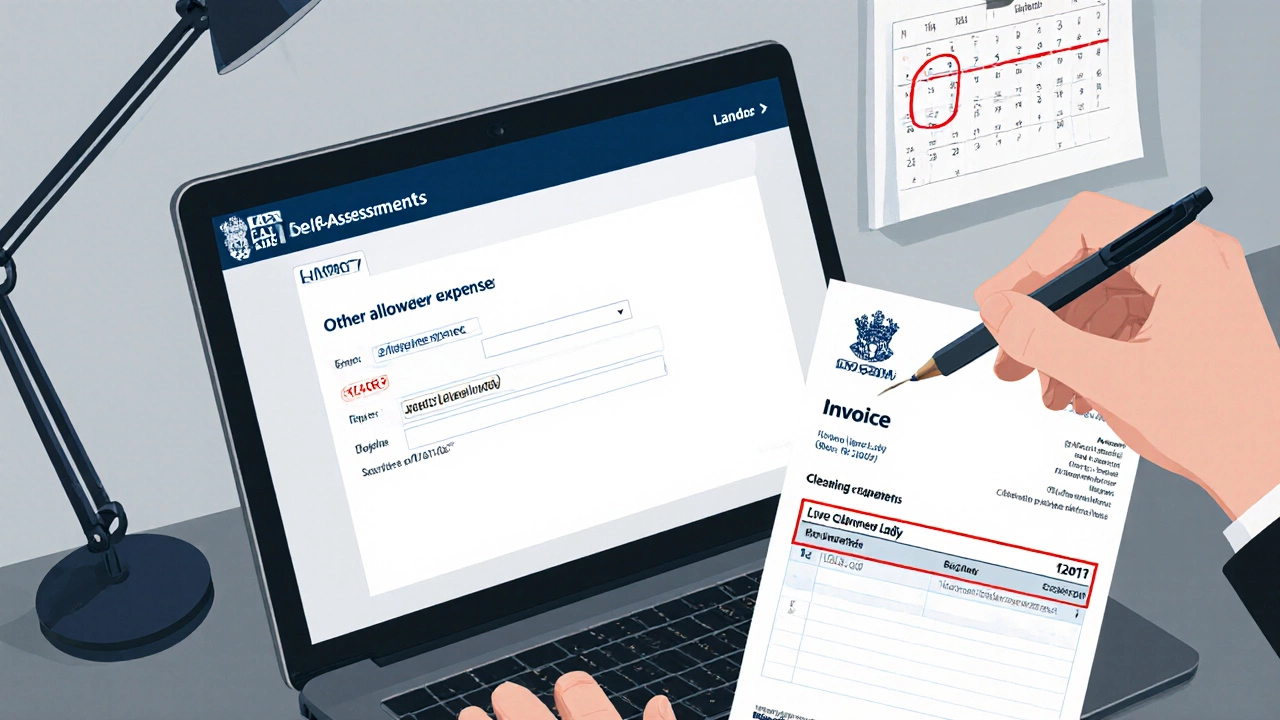
Real‑World Example: Jane’s Rental Property
Jane lets a two‑bedroom flat in Manchester. She pays £350 to a cleaning lady for a full end‑of‑tenancy service. Her rental income for the year is £9,600.
Here’s how the deduction works:
- Jane records the £350 as an "Other allowable expense" on her Self Assessment.
- Her taxable rental profit drops to £9,250 (£9,600 - £350).
- Assuming a 20% income tax rate, Jane saves £70 on her tax bill (20% of £350).
The net effect: Jane keeps more money while ensuring the property looks fresh for the next tenant-a win‑win.
Quick Comparison: DIY vs. Professional Cleaning
| Aspect | Do‑It‑Yourself | Professional Service |
|---|---|---|
| Up‑front cost | £0-£50 (cleaning supplies) | £300-£500 per turnover |
| Tax deductibility | Only material costs (often negligible) | Fully allowable as a rental expense |
| Time investment | 8-12 hours plus effort | 1-2 hours of coordination |
| Quality & tenant appeal | Variable, depends on skill | Consistently professional, higher tenant satisfaction |
Bottom Line
If you’re a landlord or a tenant who pays the cleaning lady on behalf of the landlord, you can legitimately claim the cost as a cleaning lady tax deduction. Keep solid records, ensure the service is tied directly to the tenancy turnover, and file the expense within the right tax year. When done right, the write‑off reduces your tax bill and helps keep your property market‑ready.
Can I claim cleaning costs if I’m a tenant?
Only if you pay the cleaning lady and then get reimbursed by your landlord. The reimbursement must be documented, and you can claim the net amount you actually incurred.
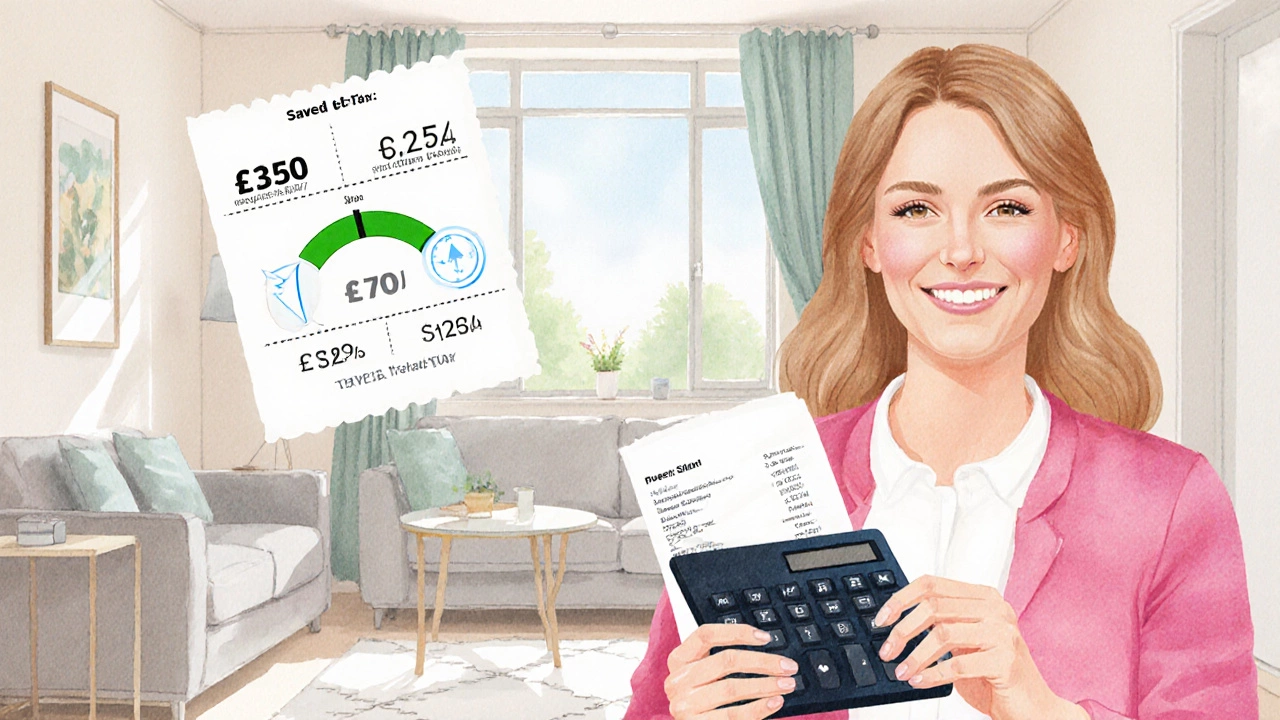
What if the cleaning includes minor repairs?
Separate the repair costs from the cleaning invoice. Repairs are also allowable, but they must be listed under a different expense line (e.g., “Repairs and maintenance”).
Do I need to be VAT‑registered to claim the expense?
No. VAT registration only affects whether you can reclaim the VAT portion. The net cleaning cost is still deductible for income tax purposes.
How long should I keep the cleaning invoices?
HMRC requires you to retain records for at least six years after the end of the tax year in which the expense was claimed.
Can I claim the cost for a pre‑move‑in deep clean?
Yes, if the clean is a condition of the tenancy agreement and is necessary to let the property. Treat it the same as an end‑of‑tenancy clean.
